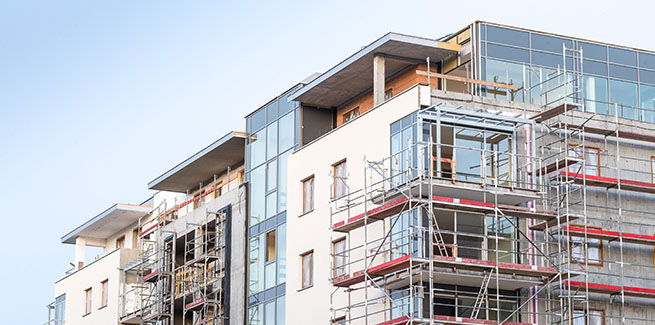The Housing Industry Association (HIA) released its quarterly economic and industry outlook report, which found that building approvals had fallen by 15.2 per cent in the first three months of 2019.
Earlier this year, the association had predicted that building activity would continue on its downward slide over the next two years unless migration policy was further tightened.
According to HIA’s estimates, there were around 225,900 new homes that started getting built in 2018, up 4.4 per cent over the previous year, with data from the Australian Bureau of Statistics (ABS) showing that $68.7 billion worth of work on new homes was completed last year.
In light of first quarter figures, the HIA is projected a further 11 per cent drop in building approvals throughout the remainder of 2019.
It forecasts building approvals to decrease to around 184,500 in 2019, 180,000 in 2020, and 183,500 in 2021.
HIA chief economist Tim Reardon said: “Preliminary data suggests that the housing market has adjusted from a strong annualised rate of home building of around 220,000 homes per year this time last year, to around 183,000 at the start of 2019.”
He added that the association had anticipated that the correction to new home building activity would take two years, as opposed to just six months.
“Market confidence fell away in the later part of 2018 as dwelling prices corrected, adversely impacting all segments of the market. Investors and owner-occupiers are delaying purchase decisions, and foreign investment has also fallen dramatically due to a range of government restrictions,” Mr Reardon said.
The chief economist noted that, at the beginning of this year, it was expected that a strong national economy would offset the housing downturn.
“These hopes fell away as GDP slowed,” Mr Reardon said.
He also expressed concern that if the Reserve Bank of Australia waits for a deterioration in the labour market before it lowers the official cash rate, “it might be too late for the home building industry, which will adjust employment levels for this lower level of activity”.
“Unfortunately, a cut to interest rates in 2019 will not have the same positive impact on new home building as in previous cycles,” the HIA chief economist said.
Mr Reardon believes loosening the Australian Prudential Regulation Authority’s lending restrictions would be more impactful than cutting interest rates alone.
“Banks are assessing borrowing capacity against a minimum floor of a 7.25 per cent mortgage rate, and for interest-only loans to be assessed on a principal and interest basis for the term of the loan,” he noted.
HIA’s optimism remains low, with Mr Reardon saying that the impact of a slowing economy and the continued credit squeeze would continue to slow home building activity, regardless of the timing of both interest rate cuts and withdrawal of lending restrictions.
“As a consequence, there is a need to downgrade our expectations of the speed of the current downturn in the housing market further,” the chief economist concluded.
Earlier this week, the HIA expressed concern that lending for the purchase or construction of new homes in March had dropped to its lowest level since September 2013.
ABS statistics showed that loan commitments for the purchase or construction of new homes had fallen by 19.4 per cent from the figure recorded in July 2017.
Lending to owner-occupiers purchasing or funding the construction of new homes in the three months to March 2019 fell in all states, when compared with the previous quarter, with NSW down by 23.6 per cent, Victoria by 18.8 per cent, Western Australia by 17.8 per cent, Queensland by 15.6 per cent, Tasmania by 12.7 per cent and South Australia by 10.1 per cent.
HIA managing director Graham Wolfe last month also warned against the government’s proposal to cap skilled migration to Australia from 190,000 to 160,000 in 2019-20, saying that it will be particularly harmful to the housing industry.
He noted that the housing industry is “more vulnerable to skill shortages than many other industry sectors”. This is due to “an ageing labour force, the physical nature of work, the ongoing demand for new housing and the often cyclical nature of activity”.
“Skilled worker visas have for many years allowed people trained and experienced in other countries to enter Australia and work for an approved business that sponsors the worker. This approach fails to recognise that trade contractors have always operated their own business,” Mr Wolfe said.
“The current visa models simply don’t suit the housing industry’s long-accepted approach to doing business, which relies heavily on the efficient and affordable model of independent contracting.”
As such, in the lead up to the federal election on Saturday (18 May), the HIA called on political parties to remove the caps and limits that exist on skilled and business migration categories and to introduce a new visa category for skilled workers that can operate as a trade contractor independent of a single employer.
[Related: Dwelling approvals take a 27% dive]

